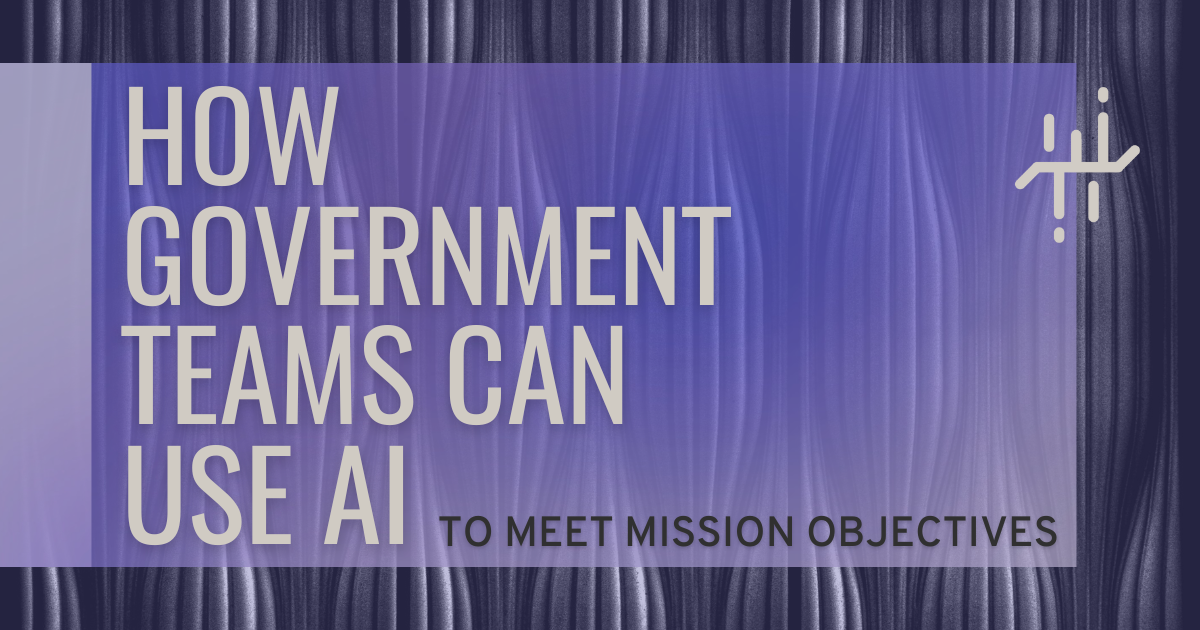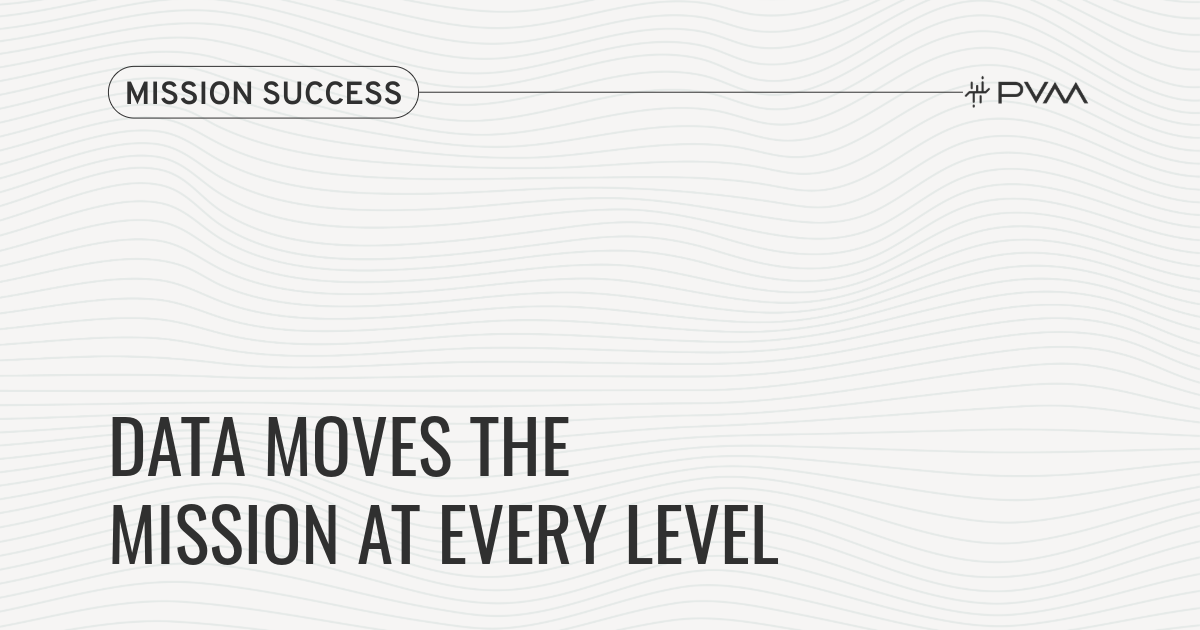Meet Terrence Alexander: Former CDC Fellow and Current PVM Data Scientist
We sat down with Terrence Alexander, Data Scientist at PVM. His path from Memphis to the CDC — and now to PVM — reflects a career built on curiosity,...
I NEED HELP WITH...
I'M WORKING WITH...
INDUSTRIES

At PVM, we have extensive experience unlocking the power of data and helping our clients achieve their missions in federal, state, and local governments, as well as commercial sectors. In today's data-driven world, organizations across all sectors recognize that their success hinges on harnessing the full potential of their data.

ABOUT US
TECH PARTNERS

3 min read
![]() The PVM Team
August 3, 2023
The PVM Team
August 3, 2023

This article is part 2 of a 3-part series: Guide to Artificial Intelligence for Government. If you missed it, read part 1 to learn about the benefits of AI for government, or move on to part 3 to read about the security and ethical considerations to think about to start implementing AI today.
Government agencies and other teams have been diligently collecting and modeling vast amounts of data over the years. This groundwork has laid a solid foundation for the integration of artificial intelligence (AI)—enabling many agencies to stat implementing these technologies immediately. By utilizing this rich dataset, government teams are poised to unlock new opportunities for advanced analysis. The data-driven insights obtained through AI can enable faster, more effective decision-making, revolutionizing the way agencies operate.
For those of you who have already taken the proactive step of modeling your data into a semantic layer—or a business representation of corporate data—in enterprise data systems like Palantir Foundry for example, the adoption of AI represents an immediate opportunity to unlock the full potential of your data. If you have already laid the groundwork by creating ontologies and capturing the relationships between your data elements, you are already well positioned to reap significant benefits from AI integration. By leveraging existing data models, public sector teams have already established a solid foundation for AI-powered analytics and decision-making.
And, if you’re a Palantir user, you’re even more ready than you might have thought. Palantir recently released its Artificial Intelligence Platform, which takes the data you already have modeled in your system and adds a layer of artificial intelligence on your own private network.
By incorporating AI platforms, like the Palantir AI Platform or other similar models, into your existing infrastructure, government teams can use AI to operationalize the semantic understanding of their data to drive operational impact. AI systems can rapidly analyze and interpret vast amounts of data, enabling organizations to make informed decisions in real-time and respond swiftly to evolving circumstances. The integration of AI into semantic data models that you’ve already created introduces the potential for immediate, substantial improvements in operational efficiency, strategic decision making, and overall ability to meet your mission with greater precision and effectiveness. With AI's capabilities to automate decision-making processes, organizations can experience significant time savings—tasks that once took days or weeks to complete can now be accomplished in a matter of minutes, empowering public sector teams to be more agile and responsive.
Now that we’ve discussed why there is so much urgency for government teams to adopt AI and explained why your data is ready for next-level analysis today, let’s cover some of the ways government teams can use AI to improve operations. Of course, AI has infinite potential use cases, but here are just a few examples:
AI can analyze historical data to identify patterns, predict future trends, and anticipate potential risks. This can empower your teams to proactively address challenges and allocate resources more efficiently. For example, if your mission is to mitigate public health risks, AI can analyze past data to predict a future outbreaks so your teams can work to mitigate that risk in advance. Or, if you work in law enforcement, AI can analyze historical crime data, identify patterns, and predict high-risk times for criminal activity. That way, your team can work on strategies to mitigate and protect public safety.
AI can process vast amounts of structured and unstructured data, for example social media, news articles, and intercepted communications, to extract valuable insights. So many government agencies can use the power of AI to help improve data analysis—for example teams focused on gathering intelligence can use AI to help identify potential threats, monitor trends in their data, and inform national security strategies.
Government agencies can leverage AI to develop autonomous systems like drones and unmanned vehicles for surveillance, reconnaissance, and tactical operations. For defense teams, these autonomous systems can increase their capabilities to operate in challenging environments and help provide real-time situational awareness.
To help protect from cyber threats, AI can analyze network traffic, detect anomalies, and identify risks in real-time. This application of AI can help all government teams better protect from cyber threats by strengthening their cybersecurity posture, identifying vulnerabilities and responding swiftly to potential attacks.
Again, AI can be used in so many ways to help government teams better achieve their mission objectives. From public health agencies leveraging AI for disease surveillance to law enforcement agencies using AI for crime prediction, the possibilities are vast. By harnessing the power of AI, government teams can enhance their capabilities, make data-driven decisions, optimize resource allocation, and improve public safety and security.
Download your own FREE copy of PVM's Guide to Artificial Intelligence for government and other public sector teams.

We sat down with Terrence Alexander, Data Scientist at PVM. His path from Memphis to the CDC — and now to PVM — reflects a career built on curiosity,...

By Sydney Metzmaker Data can move the mission — and when it does, it’s one of the most powerful forces in government operations. When data flows...

By Bret Frederick When I was a young Marine, I worked as a systems administrator on the Marine Corp’s air battle planning system. It was part of a...